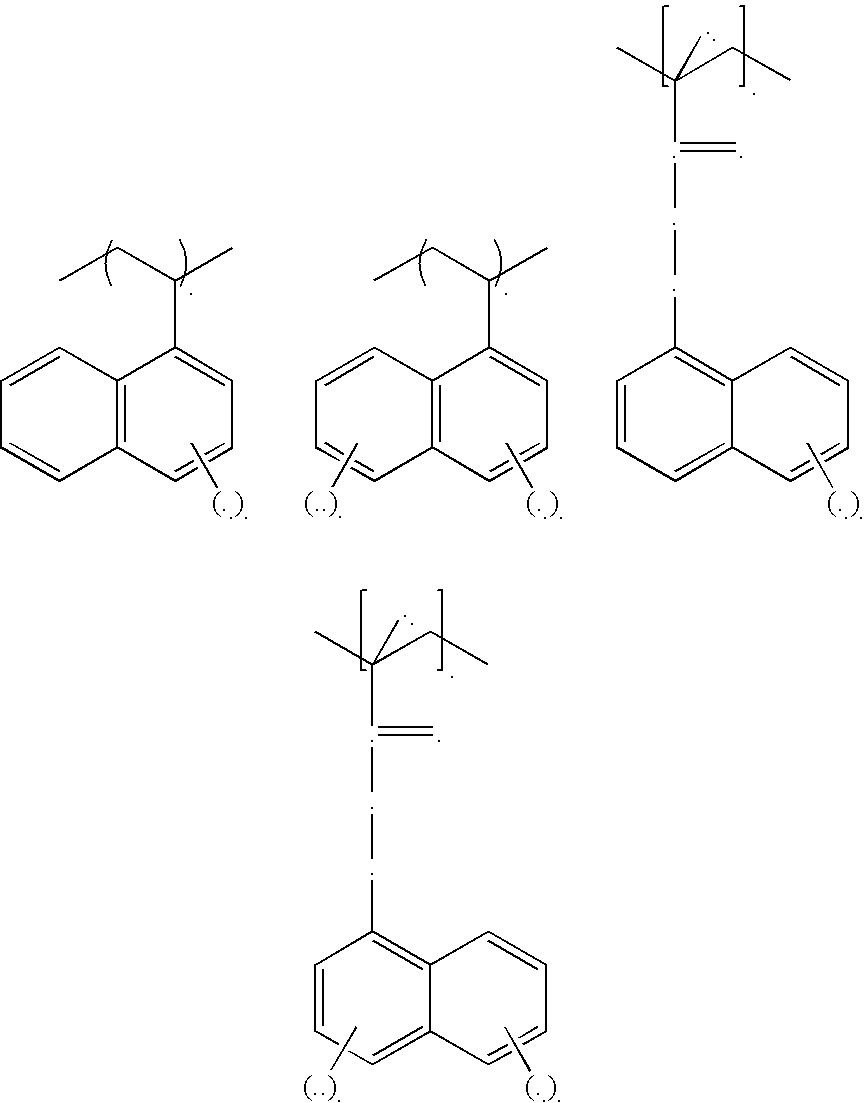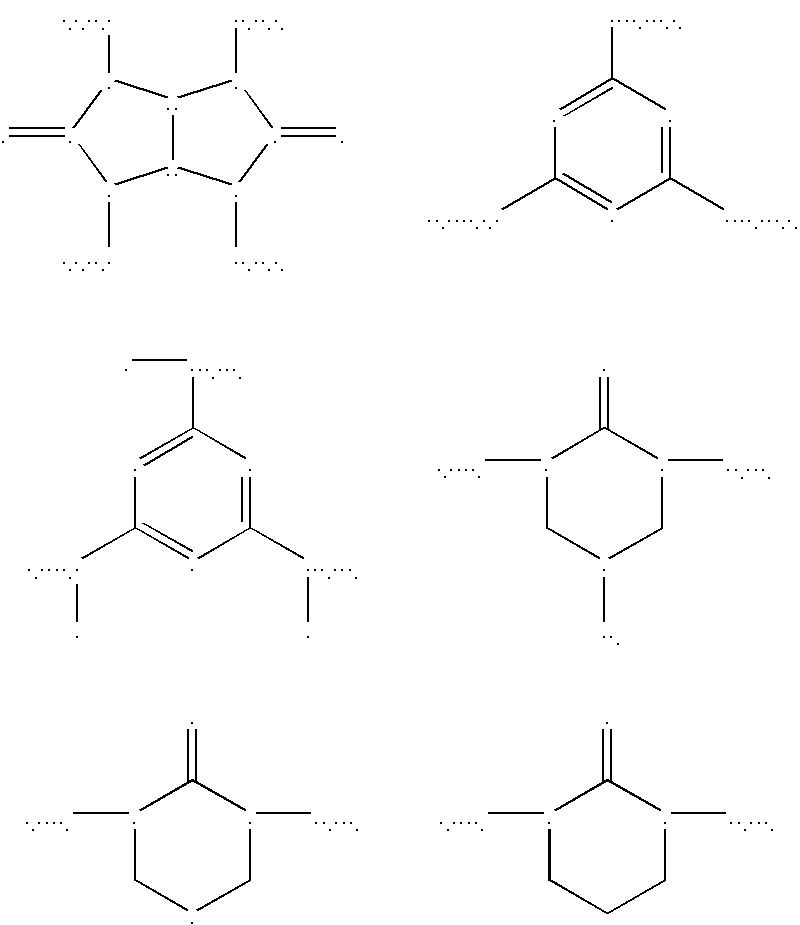Low refractive index polymers as underlayers for silicon-containing photoresists
a technology of low refractive index and polymer, which is applied in the direction of auxillary/base layers of photosensitive materials, instruments, photosensitive materials, etc., can solve the problems of low etch resistance of polymer layer under the underlayer, and inapplicability to 193 nm lithographic applications, etc., to achieve high etch resistance and improve optical properties
- Summary
- Abstract
- Description
- Claims
- Application Information
AI Technical Summary
Benefits of technology
Problems solved by technology
Method used
Image
Examples
example 1
Synthesis of copolymer of 2-vinylnaphthalene and 5-hydroxy-1-naphthalenyl methacrylate (VN / HNM(60 / 40))
[0044] 1.01 g of 2-vinylnaphthalene, 1 g of 5-hydroxy-1-naphthalenyl methacrylate and 90 mg of 2,2′-azobis(2-methylpropionitrile) (AlBN) initiator were dissolved in 8.4 g of tetrahydrofuran (THF) and charged into a 3-neck flask. The system was then purged with N2 for 30 minutes before the temperature was raised to 70° C. The reaction was carried out under N2 overnight at 70° C. The solution was then precipitated in 1000 ml of deionized (DI) water. The polymer was collected and dried in vacuum oven overnight at 65° C. Yield was 96%.
example 2
Synthesis of terpolymer of 2-vinylnaphthalene, 5-hydroxy-1-naphthalenyl methacrylate and hydroxyethyl methacrylate (VN / HNM / HEMA(37.5 / 37.5 / 25))
[0045] 0.68 g of 2-vinylnaphthalene, 1.01 g of 5-hydroxy-1-naphthalenyl methacrylate, 0.38 g of hydroxyethyl methacrylate and 101 mg of AlBN initiator were dissolved in 10.8 g of THF and charged into a 3-neck flask. The system was then purged with N2 for 30 minutes before the temperature was raised to 72° C. The reaction was carried out under N2 overnight at 72° C. The solution was then precipitated in 1000 ml of DI water. The polymer was collected and dried in vacuum oven overnight at 65° C. Yield was >90%.
example 3
Synthesis of homopolymer of 5-hydroxy-1-naphthalenyl methacrylate (HNM)
[0046] 1.0 g of 5-hydroxy-1-naphthalenyl methacrylate and 36 mg of AlBN initiator were dissolved in 6 g of THF and charged into a 3-neck flask. The system was then purged with N2 for 30 minutes before the temperature was raised to 72° C. The reaction was carried out under N2 overnight at 72° C. The solution was then precipitated in 2000 ml of DI water. The polymer was collected and dried in vacuum oven overnight at 65° C.
PUM
| Property | Measurement | Unit |
|---|---|---|
| wavelength | aaaaa | aaaaa |
| wavelength | aaaaa | aaaaa |
| reflectivity | aaaaa | aaaaa |
Abstract
Description
Claims
Application Information
 Login to View More
Login to View More - R&D
- Intellectual Property
- Life Sciences
- Materials
- Tech Scout
- Unparalleled Data Quality
- Higher Quality Content
- 60% Fewer Hallucinations
Browse by: Latest US Patents, China's latest patents, Technical Efficacy Thesaurus, Application Domain, Technology Topic, Popular Technical Reports.
© 2025 PatSnap. All rights reserved.Legal|Privacy policy|Modern Slavery Act Transparency Statement|Sitemap|About US| Contact US: help@patsnap.com



